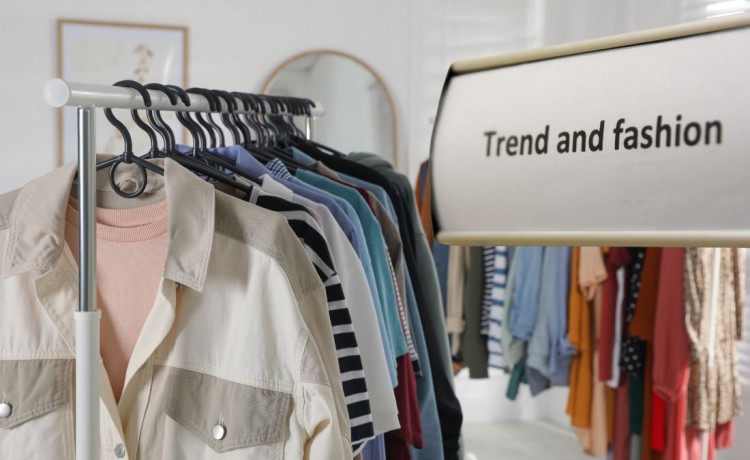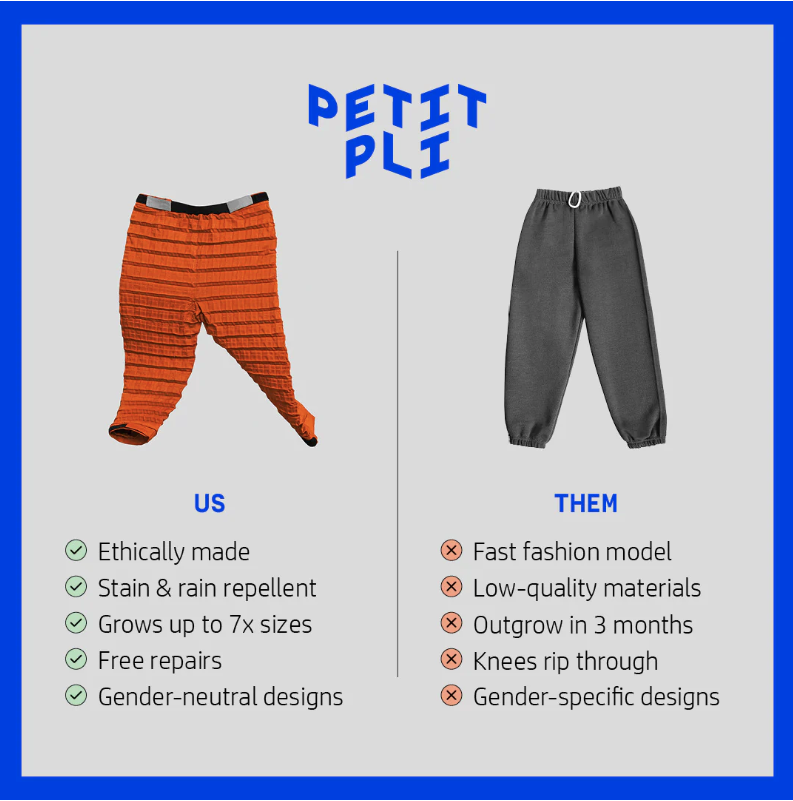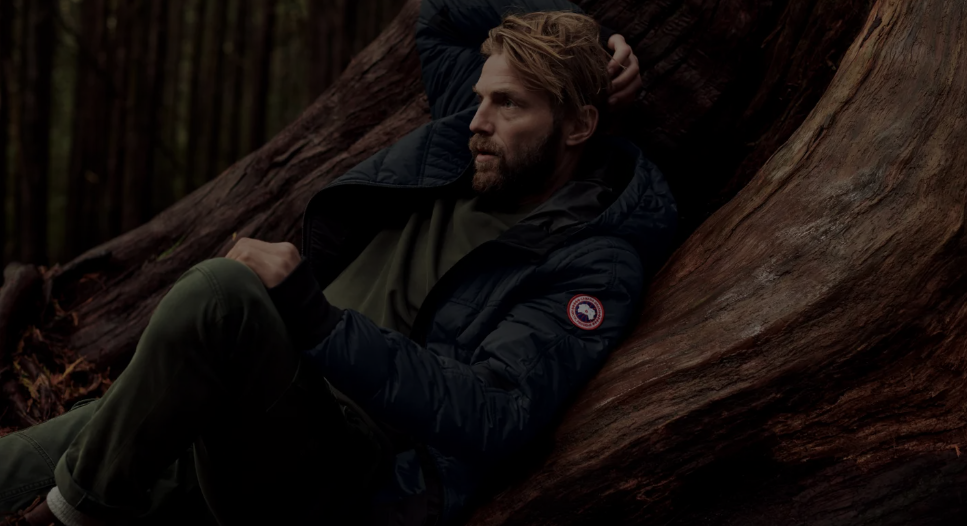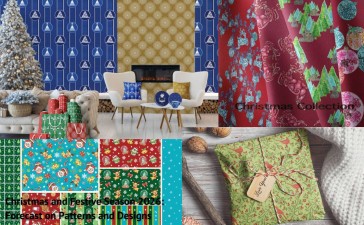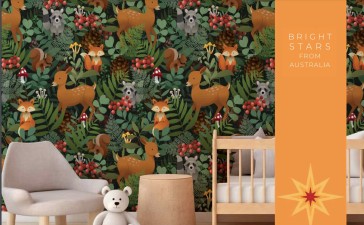As we approach 2025, the fashion landscape is set to undergo significant transformations, reflecting our changing world, values, and technological advancements. This forecast explores the key fashion categories and themes that are expected to dominate the industry, offering a glimpse into the future of style.
Petit Pli- Modular Fashion Versatility
Fashion Categories:
- Sustainable Fashion: Sustainability will no longer be a trend but a fundamental aspect of fashion. Brands will increasingly focus on eco-friendly materials, circular production methods, and transparent supply chains. Expect to see more biodegradable fabrics, upcycled collections, and zero-waste designs.
- Tech-Integrated Clothing: The fusion of fashion and technology will reach new heights. Smart fabrics that can regulate body temperature, change color, or monitor health metrics will become more prevalent. Wearable tech will be seamlessly incorporated into everyday garments, blurring the lines between fashion and function.
- Gender-Fluid Fashion: The concept of gendered clothing will continue to fade, with more brands offering gender-neutral collections. Silhouettes, colors, and styles will be designed to be worn by anyone, regardless of gender identity.
- Adaptive Fashion Inclusivity: will extend beyond size and gender to focus on adaptive clothing for people with disabilities. Expect innovative designs that combine style with functionality, making fashion truly accessible to all.
- Virtual Fashion: As virtual and augmented reality become more integrated into our lives, digital fashion will gain prominence. Virtual clothing for avatars in digital spaces will become a significant market, with some pieces existing solely in the digital realm.
- Retro Revival Fashion’s cyclical nature: will bring back trends from various decades, reinterpreted for the modern era. Expect to see elements from the ’70s, ’90s, and early 2000s making a comeback with a futuristic twist.
- Artisanal Craftsmanship: In contrast to mass production, there will be a renewed appreciation for handcrafted, artisanal pieces. Traditional techniques and local craftsmanship will be celebrated, creating unique, high-quality garments.
- Modular Fashion Versatility: will be key, with modular clothing that can be transformed or customized becoming popular. Think detachable sleeves, reversible jackets, and pieces that can be styled in multiple ways.
- Protective Fashion: In response to global health concerns and environmental challenges, fashion with protective properties will gain traction. This includes clothing with built-in UV protection, air filtration, and antimicrobial properties.
- Extreme Weather Wear: As climate change leads to more extreme weather conditions, fashion will adapt with innovative materials and designs suited for various environmental challenges.
- Accessible and affordable fashion: One of the most significant trends shaping the fashion landscape of 2025 is the continued rise of accessible and affordable fashion. This concept, which gained momentum in the early 2020s, has become a cornerstone of the industry. Global companies like SHEIN have been at the forefront of this movement, with their mission to create fashion featuring the latest trends at prices accessible to everyone. The success of initiatives like SHEIN X US leads by Anqi Xu, which collaborates with top designers from renowned brands, has redefined the boundaries between high-end and fast fashion. A prime example is the SHEIN X MONSE collaboration, which brought designer aesthetics to a wider audience at unprecedented price points. By 2025, this democratization of fashion has led to a more inclusive industry, where style is no longer dictated by income bracket. Innovations in sustainable manufacturing and digital fashion have further supported this trend, allowing for high-quality, design-forward pieces to be produced and distributed efficiently and economically.
Canada Goose – Extreme Weather Wear
Themes:
- Futurism Meets Nostalgia: The fashion of 2025 will be characterized by a unique blend of futuristic elements and nostalgic references. Designers will draw inspiration from both sci-fi visions of the future and romanticized interpretations of the past. This fusion will result in looks that feel both familiar and cutting-edge.
For example, we might see holographic fabrics paired with ’70s-inspired silhouettes, or AI-generated patterns on vintage-style garments. This theme reflects our complex relationship with time and progress, acknowledging our roots while embracing the future.
2. Conscious Consumption: The theme of conscious consumption will permeate all aspects of fashion. Consumers will prioritize quality over quantity, opting for durable, versatile pieces that stand the test of time. This shift will challenge the fast fashion model, encouraging brands to focus on longevity and timeless design.
Expect to see more brands offering repair services, buy-back programs, and detailed information about the lifecycle of their products. Fashion rentals and second-hand marketplaces will become mainstream, redefining ownership in the fashion industry.
3. Digital Identity Expression: As our lives become increasingly digital, fashion will play a crucial role in expressing our online identities. This theme will manifest in both physical and virtual realms. In the physical world, we’ll see clothing that incorporates QR codes, augmented reality elements, or other digital interfaces that connect our online and offline personas.
In the virtual world, digital fashion will become a significant form of self-expression. From custom skins in video games to virtual clothing for social media filters, how we dress our digital selves will be as important as our physical appearance.
4. Adaptive Aesthetics: The concept of static style will give way to adaptive aesthetics. Clothing that can change color, pattern, or form based on environmental factors or wearer preferences will gain popularity. This theme speaks to our desire for nov elty and personalization, allowing a single garment to serve multiple purposes and moods.
5. Biophilic Design: As urbanization continues, fashion will seek to reconnect us with nature. This theme will be evident in the use of natural materials, organic shapes, and nature-inspired patterns. We’ll see an increase in plant-based leathers, dyes derived from algae, and fabrics that mimic natural textures.
Biophilic design in fashion will also extend to garments that actively support biodiversity, such as clothing embedded with seeds or materials that purify the air as you wear them.
6. Global Fusion Globalization and cultural exchange: will lead to a rich tapestry of influences in fashion. Traditional crafts and motifs from various cultures will be reinterpreted and combined in new ways. This theme celebrates diversity and promotes cross-cultural understanding through fashion.
7. Emotional Wellbeing Fashion: will increasingly be viewed as a tool for emotional wellbeing. This theme will manifest in clothing designed to comfort, calm, or energize the wearer. Expect to see garments with weighted elements for anxiety relief, colors and patterns scientifically proven to boost mood, and fabrics that release soothing scents.
8. Augmented Humanity: As technology becomes more integrated into our lives and bodies, fashion will play a role in this augmentation. This theme explores the boundaries between human and machine, natural and artificial. We might see clothing that enhances physical capabilities, interfaces with neural implants, or serves as a platform for human-AI collaboration.
Here are some examples based on trends and company directions that were emerging or established leading up to 2024, which align with the themes discussed in the trend article.
- Sustainable Fashion:
- Patagonia has been a leader in sustainable practices, using recycled materials and promoting repair and reuse.
- Stella McCartney is known for her commitment to ethical fashion and use of innovative, eco-friendly materials.
2. Tech-Integrated Clothing:
- Levi’s and Google collaborated on the Jacquard project, creating denim jackets with touch-sensitive fabric for digital connectivity.
- Under Armour has been developing smart shoes that track running metrics and provide real-time coaching.
3. Gender-Fluid Fashion:
4. Adaptive Fashion:
5. Virtual Fashion:
6. Retro Revival:
- Fendi has been reintroducing and reimagining designs from its archives.
- Versace frequently draws inspiration from its iconic ’90s designs.
7. Artisanal Craftsmanship:
8. Modular Fashion:
-
-
- Petit Pli designs children’s clothing that expands to fit growing kids.
- Vavo Studio creates modular, transformable garments for adults.
-
9. Protective Fashion:
-
-
-
- Vollebak has been experimenting with clothing that offers various protective properties, including their “virus-fighting” copper mask.
- Uniqlo’s AIRism line incorporates antimicrobial properties in everyday wear.
-
-
10. Extreme Weather Wear:
-
-
-
-
- Canada Goose continues to innovate in extreme cold weather gear.
- Columbia Sportswear develops adaptive technologies for various climate conditions.
-
-
-
As we stand on the cusp of 2025, the fashion industry is poised for a remarkable transformation. The trends we’ve explored – from sustainable practices and tech integration to gender fluidity and adaptive design – are not mere predictions, but evolutions of movements already set in motion by pioneering brands and forward-thinking designers.
These emerging directions demonstrate the industry’s capacity for innovation and adaptation. Fashion houses and manufacturers have been laying the groundwork for years, responding to changing consumer values, technological advancements, and global challenges. As we approach 2025, we can expect these initiatives to flourish, with more companies joining the vanguard of sustainable, tech-integrated, inclusive, and innovative fashion.
The fashion landscape of tomorrow promises to be more diverse, dynamic, and reflective of our complex world than ever before. It will be an era where tradition and futurism coexist, where personal expression meets global responsibility. Consumers will find themselves with unprecedented options to articulate their identities, values, and aspirations through their sartorial choices.
However, with great choice comes great responsibility. The key for both industry professionals and consumers will be to navigate these trends thoughtfully. It’s about striking a balance – embracing innovation while honoring craftsmanship, pursuing sustainability without sacrificing style, and celebrating individuality while fostering inclusivity.
As we step into this exciting new chapter of fashion history, we are not just observers but active participants. Whether you’re an art director envisioning the next big campaign, a business leader steering your brand towards the future, or a manufacturer reimagining production processes, your decisions will shape the industry’s trajectory.
The fashion of 2025 is more than just clothing; it’s a reflection of our collective journey, our values, and our hopes for the future. By choosing styles that resonate with our personal aesthetics and ethical standards, while remaining open to the thrilling possibilities ahead, we can all play a part in crafting a fashion industry that is as responsible as it is revolutionary.
The future of fashion is in our hands – let’s wear it well.
- Find out more
- Launch Pad + Accelerator Expressions of Interest
- Selling and Licensing Your Art & Designs Around the World with ArtSHINE.
- Looking for exciting new Art and Designs to license.
We’re here to help you to take action, just like we’ve helped thousands of other entrepreneurs, business owners, and creative professionals all around the globe.
Now is the time to let your passion SHINE.
Now is the time to Make Tomorrow Today!
To your success, Vinh Van Lam and Stuart Horrex Cofounders ArtSHINE.com

